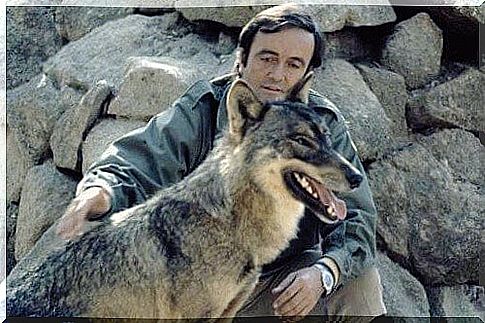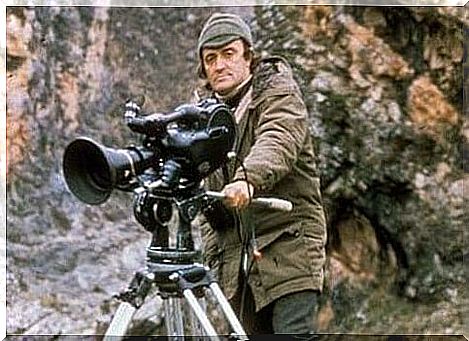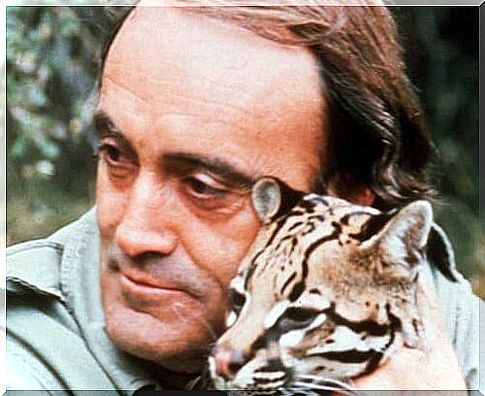Félix Rodríguez De La Fuente, Biography Of The Great Television Ecologist

Félix Rodríguez de la Fuente left this world at the age of 52. However, his legacy lives on. There are several generations that keep today with admiration and affection images and adventures narrated by that unmistakable voice. His Man and the Earth program marked an era and taught thousands of people what love for nature was.
Felix died on March 14, 1980 in Alaska, on his birthday after a fatal plane crash. The remains of the incident were found in Shaktoolik, a town where the Inuits live very close to Klondike. This place was one of the ecologist’s favorites because of his passion for Jack London books. It is even known that just before taking off, he looked at the sky and, admired by so much beauty, he even said: “Isn’t it a beautiful place to die?”
That strange premonition would also mark part of the legend of Félix Rodríguez de la Fuente. He was a multifaceted and media man, capable of moving and surprising an entire society that, at that time, still did not have a true ecological conscience. He laid the foundations and showed us, above all, the richness of our ecosystems and the beauty of an animal that he loved above all others: the wolf.

Félix Rodríguez de la Fuente, early years: the mountain and the birds of prey
Félix Rodríguez de la Fuente was born on March 14, 1928 in Burgos. He was the son of a notary and in his house he always breathed a very high cultural environment, where he grew up surrounded by a passion for books, curiosity and learning. Now, it should be noted that Felix took a long time to get to school. The echoes of the Civil War marked the rhythm and life of its population, hence the family opted for education at home.
Thus, and during the first 10 years of life, little Felix was able to enjoy constant escapes to the countryside and the mountains, his fondness for falconry rising early. This, the world of nature and the understanding of its ecosystems would have been without a doubt the first option in his life. However, his father insisted on guiding him towards a more profitable profession (according to him) such as medicine.
In 1946 he began his studies in Valladolid and in 1957 he graduated in stomatology in Madrid, achieving the extraordinary award of his promotion. For a few years he came to practice as a dentist, but only part-time. The afternoons were devoted to falconry. It was not until 1960, when his father passed away, that he was finally able to dedicate himself professionally to the study and protection of birds of prey.
Felix, the animal friend and the great communicator
In 1964 Félix Rodríguez de la Fuente began to consolidate his fame on Spanish Television (TVE). After winning an award at the International Falconry Conference, he made his entrance on the small screen for a few minutes to talk about birds. During that brief moment of time, he captivates viewers with his voice and his unmistakable way of communicating about nature. Everyone was left wanting more.
Soon, Spanish television offers him a program, Félix, the animal friend , which he takes advantage of to disseminate values about the country’s fauna and flora. That would undoubtedly be his starting goal, because from that moment on, publications, books, documentaries and a book that won several awards, Alas y Garras, began .

The man and the earth , an emblematic program
Between 1973 and 1980, his best known and most emblematic production reached television: Man and the Earth. The production is divided into three parts: the Iberian, South American and North American series. It should be noted that those episodes were made without a script and that Felix improvised the development of each one of them. The audiovisual impact was immense.
One of its main purposes was to sensitize children and adolescents about respect for animals and nature. We should not detract from this purpose, especially since in those years both interest and knowledge about these issues was very limited.
Félix Rodríguez de la Fuente and the wolves
It was in 1965 when Félix did something that changed his life: he saved two cubs from being beaten to death in Aragon. He adopted them, named them Romulus and Remus, and became their alpha wolf, the head of the pack. That love for wolves led him to fight for the protection of an animal hated in the Iberian Peninsula and that was on the way to extinction, as had happened in almost all of Western Europe.
His desire to mobilize the population and the institutions for their protection earned him more than a death threat, but Félix, far from surrendering, also fought for the lynx, the imperial eagle and the Iberian bear. Thanks to him, the concept of “protected species” was introduced into the Hunting Law for those animals that should not be harmed.
Rewards for killing wolves were also eliminated and a large number of pioneering projects for the conservation and protection of flora and fauna were also started.
Félix Rodríguez de la Fuente would now be 91 years old. Surely, and knowing his fighting character and his communication skills, he would have continued to be active captivating millions of people with his explanations and with his love for animals. Already in those years he told us about the need to take care of the seas and beaches, to carry out sustainable consumption …
As we can see, he was a pioneer in aspects that are key today. It was that voice that woke up several generations and a figure that, without a doubt, is still missing.








